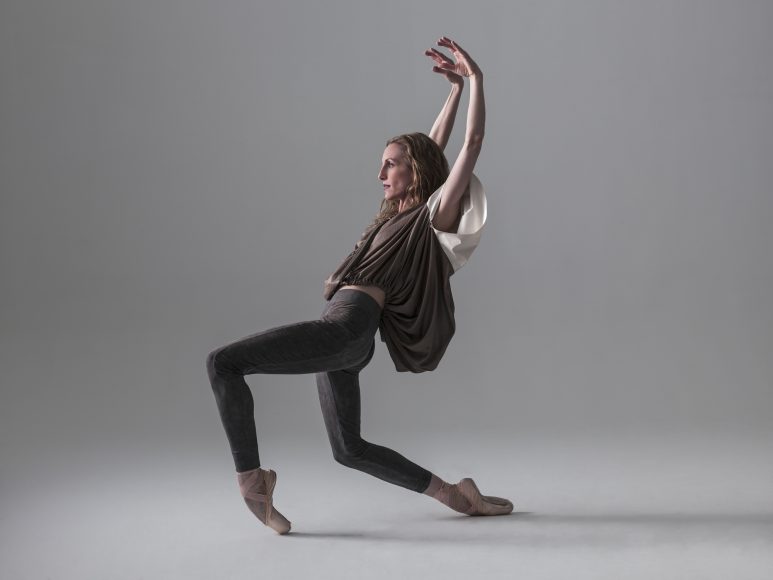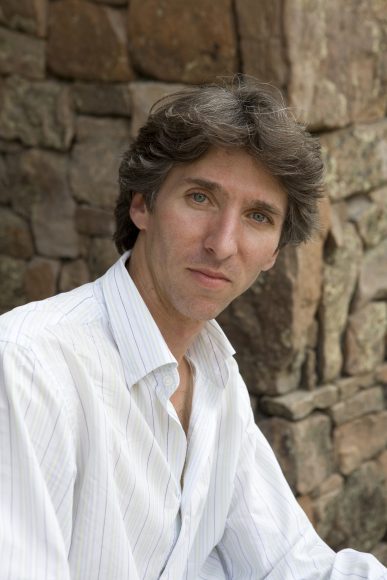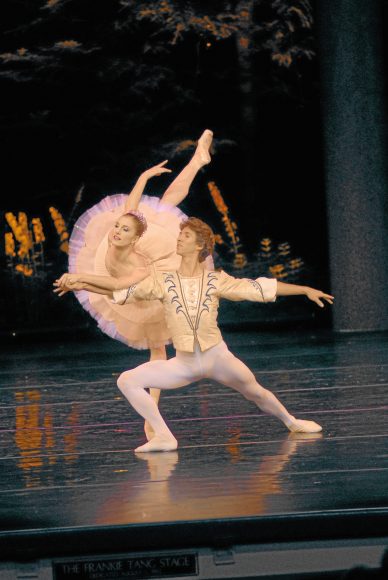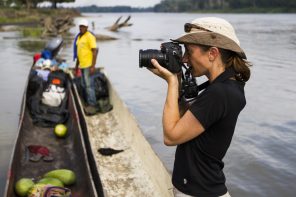Not many ballet dancers have degrees from Harvard.
But then, Damian Woetzel – artistic director of the Vail International Dance Festival in Colorado – was not many ballet dancers.
The former New York City Ballet star – who stood out in a company in which even the principal dancers are listed alphabetically – was one of the greatest danseurs that ballet has ever produced.
And yet, he would be just as eager to discuss Harold Bloom’s “How to Read and Why” or haunt a Barnes & Noble near the City Ballet’s Lincoln Center home. No surprise. His mother was a senior officer for UNICEF; his father, the late, Shanghai-born Robert K. Woetzel, an international law expert who taught at Harvard, Fordham, NYU, Boston College, UCLA and USC and advocated the creation of the International Criminal Court; his brother, Jonathan, the Shanghai-based director of McKinsey & Co. a global management consulting firm.
But Woetzel, who was born in 1967 in Boston where he started dancing at age 4, set off on another road. And after his family moved to Southern California, he joined the Los Angeles Ballet at 15, attracting the notice of no less a critic than The New Yorker’s persnickety Arlene Croce for his command of the title role in John Clifford’s “Young Apollo.”
Woetzel soon redirected himself East, to dance Jerome Robbins’ works with the New York City Ballet (NYCB). In December of 1984, he enrolled in the company-affiliated School of American Ballet, where he studied with Stanley Williams – who trained many of the great male dancers, including NYCB ballet master-in-chief Peter Martins. Six months later, Woetzel was a member of the company, becoming a principal in 1989.
What made Woetzel a great dancer? You have to begin with his striking looks, critics said.
“He has a memorable face,” Alastair Macaulay, the chief dance critic of The New York Times, wrote when he retired in 2008. “You would have thought that the narrow jaw, that longish nose and those massive cheekbones wouldn’t go together, but they combine to make him entirely sui generis. The haircut helps: a thick center-parted dark mop, perhaps the most effective dancer haircut since Baryshnikov’s.”
Add to that a long, lean physique, an impeccable technique that could be by turns quietly fine or bravura, a romantic attention to partnering and a flair for the dramatic.
But it was his mind that made everything he did seem organic, whether he was slithering along a maze of steel pipes in Eliot Feld’s “Organon,” gazing into his partner’s eyes in “The Nutcracker” or Robbins’ “The Goldberg Variations” at Purchase College or holding the Caramoor stage alone in Robbins’ go-for-Baroque “A Suite of Dances” in Katonah.
“Woetzel belongs to the type best exemplified by Edward Villella – a regular American guy, tough and likable, with craggy good looks and no fancy airs about him,” longtime dance critic Tobi Tobias observed on Bloomberg.com of his farewell performance. “When virtuosity is called for, he makes it look free and easy. When drama is needed, he projects emotions that are intense and true.”
You think of his commanding Oberon, playfully kicking naughty Puck in the butt in George Balanchine’s “A Midsummer Night’s Dream” or of his Prince Désiré in Martins’ “The Sleeping Beauty,” removing his blindfold during a game of hide-and-seek with the disgusted snap of a man who may be forced to marry the wrong woman when true love lies asleep in a bramble castle.
And then there was his Prodigal Son – a Balanchine role that Robbins himself once danced. Even now it’s hard to hear Woetzel’s name and not see that misspent youth as he crawled across the stage on his knees – head bowed, arms behind his back – trembling as he climbed into his father’s embrace, stripped of everything but his determination to find redemption.
“Cry and the audience won’t,” Robbins had warned him. Instead it was we who were moved to tears.
Today, Woetzel – who holds a master’s degree in public administration from Harvard’s John F. Kennedy School of Government – is still moving audiences, still on the move, staging the first White House Dance Series in 2010 and working with the “Kennedy Center Honors” and Yo-Yo Ma’s The Silk Road Project. Recently, we caught up with the sometime Connecticut resident, who’s married to former New York City Ballet star Heather Watts and discovered that he likes to travel, particularly through the landscape of the mind:
The Vail festival has been praised for its mix of dance offerings and styles. What’s your programming philosophy?
“Every year I look at how we can as a festival further expand possibilities for individual dancers, for choreographers and for companies as well. The idea is what can happen in Vail that isn’t happening elsewhere. It is a unique environment for experiments, and we try to capitalize on that by seeding new partnerships, mixing different dance styles together, bringing together choreographers and dancers for the first time.”
What should attendees look for this season that they haven’t seen before?
“This year, among the new collaborations between dancers, Fang-Yi Sheu, the magnificent Taiwanese modern-dance star, will be co-creating a new piece with Shantala Shivalingappa, the exquisite classical Indian dancer. Shantala will also be working with Lil’ Buck, the Memphis jookin’ star, I can’t wait to see what happens with these collaborations. The Martha Graham Dance Company will return to Vail, but this time in addition to a completely new program of repertory for Vail, they will be staging the premiere of a new version of the Graham masterpiece ‘Letter to the World,’ and as part of that the festival, artists-in- residence Tiler Peck, Herman Cornejo and Robert Fairchild will appear as guest artists with the company, all dancing Martha Graham choreography for the very first time. Tiler and Herman will also appear as guests with the Pennsylvania Ballet, making their debuts in the Balanchine masterpiece ‘Rubies.’”
What or who excites you most on the dance scene at this moment ? (Clearly, jookin’ – a high-stepping street dance – is a favorite.)
“Jookin’ as a dance form does really energize me. It makes me wonder what is possible, how it can mix with different types of music, how other dance styles can borrow and use its vocabulary and vice versa. I love the unexpected, like last year’s mix of jooker Ron Myles with modern dancer Fang-Yi Sheu.”
Dance, or maybe ballet, doesn’t seem to have the popularity that it had during the golden age of the 1970s, even though today’s dancers are probably more gifted technically. Why do you think that is?
“I don’t really agree. I think dance has its largest audiences today and the power of technology to share exciting performances is just beginning to be felt. In the 1970s – which we affectionately call the dance boom or ballet boom – there was a different kind of fame, associated with the defections of Soviet superstars. But also there was the growth of dance itself as a genre of entertainment, and of the masters of the art form at their height. I think specifically of George Balanchine, who was reaching the end of his long career as an acknowledged genius of 20th century art.”
Arts organizations are increasingly challenged to raise funds. What is your approach to fundraising in Vail?
“While finance is always a consideration, when we are discussing the work it’s a question of how to get the best work done, not a question of numbers for me. And in Vail we have the Vail Valley Foundation behind the festival since its creation and its staffing and financial support. That along with the passionate commitment of dedicated donors has made it all possible.”
How has your career as a dancer informed your work as an administrator/entrepreneur, or are they just two different animals?
“They are related in that I bring the habits of mind I developed as a dancer to everything I do. We talk in education about building artistic habits of mind. That translates to creatively looking for solutions, failing, trying again, reinventing, applying oneself as a performer with all the pressure that brings. Those artistic habits are a way of working at anything.”
Pound for pound, you were the best dancer I ever saw. Do you miss dancing as much as your fans miss seeing you perform?
“That’s very nice of you to say. Thank you. I do miss dancing in some ways, but overall I feel like I was so fortunate to have had such a long and varied career. Ending when it did seemed right and still does. I do miss the partnerships and the uniqueness of time on the stage, having that luxury of existing in that sacred space, separate from real life.”
Our June issue is all about travel, something you do a lot of. What’s the key to traveling/commuting well?
“Secrets for me for travel are eye shades and ear plugs and music to disappear into. I really like traveling actually, a remnant from my touring life as a dancer. It’s a great time to get things done. While there is Internet now on planes, it’s still a very undisturbed environment.”
You’re an inveterate reader. So what books are on your nightstand/Kindle these days and why?
“Latest books include ‘Time’s Arrow’ by Martin Amis. Found it at a friend’s house and once I started, couldn’t stop. ‘Americanah’ by Chimamanda Ngozi Adichie. I recently did a public conversation with her, an amazing writer and person.
‘The One Hour China Book,’ by Jonathan Woetzel and Jeffrey Towson. What can I say? It’s my brother’s latest book, and it’s great.”
The Vail International Dance Festival runs July 27 through Aug. 9. For more, visit vvf.org/arts/vail-international-dance-festival.







